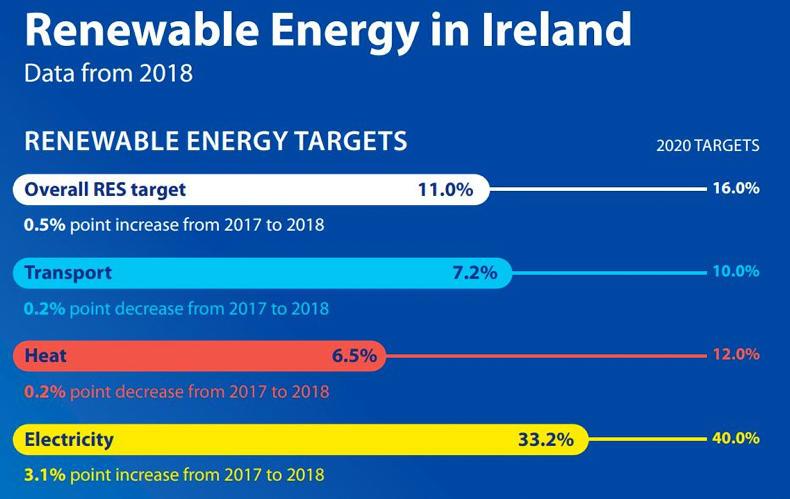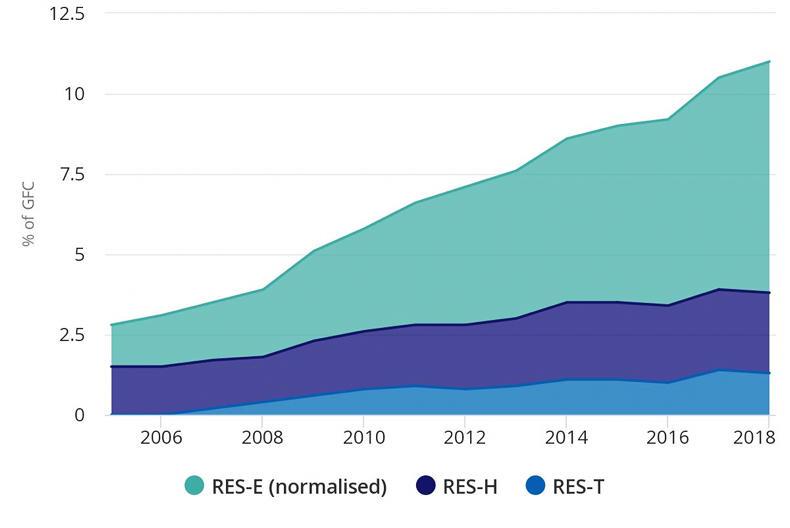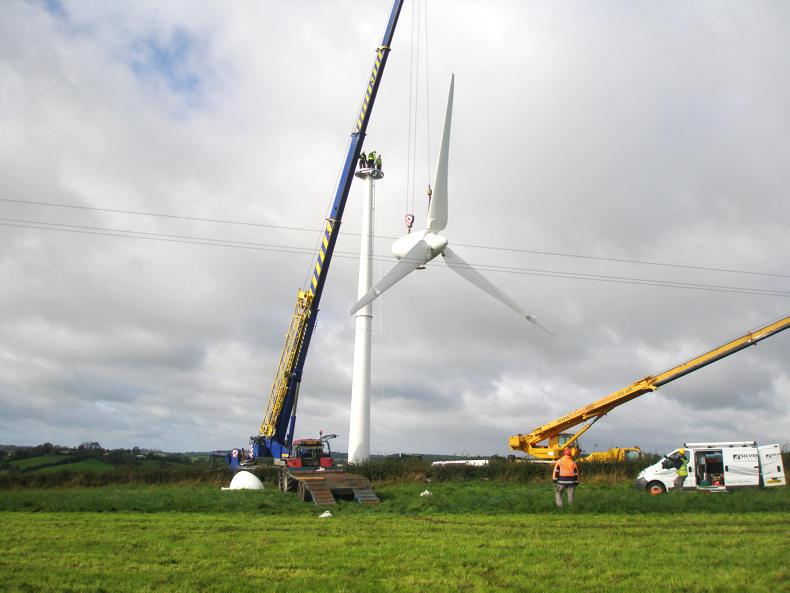Confirmation that Ireland is firmly on track to miss its 2020 renewable energy targets was given once again by the Sustainable Energy Authority of Ireland (SEAI). Last week, the SEAI released a report looking at the latest energy data from 2018.
The report gave a detailed analysis of Ireland’s progress towards our 2020 renewable energy targets. The EU Renewable Energy Directive states that at least 16% of Ireland’s gross final energy consumption must come from renewable sources by 2020.
This mandatory target was broken down into the three main modes of energy use – electricity, transport and heat. Individual targets were assigned for each. These are 40% for electricity, 11% for transport and 12% for heat.
Progress
Overall renewable energy supply was 11% of gross final consumption in 2018. Ireland has an incredibly poor profile for renewable energy generation.
In 2018, it ranked 27th out of 28 EU countries for progress towards the 2020 overall renewable energy target. Ireland’s low share of renewable heat was the biggest reason for our poor progress.
The SEAI report states that Ireland is not on track to meet any of its 2020 renewable energy targets. It anticipates that Ireland’s overall renewable achievement will be between 12.7% and 13.9%.
Any shortfall will require the purchasing of statistical transfers from EU member states that have exceeded their mandatory 2020 renewable targets. The cost of this is yet unknown.
Table 1 shows the actual amount of renewable energy used each year, split by source.
Most of the growth in renewable energy has come from wind. Wind provided 55% of all renewable energy in 2018. Solid biomass and bioliquids were the next largest sources of growth. Bioenergy, including biomass, landfill gas, biogas and bioliquids, collectively accounted for 36% of renewable energy in 2018.

Renewable electricity
Renewable electricity is the backbone of Ireland’s strategy to achieve the overall renewable energy target for 2020. Wind generated 28% of all electricity in 2018, second only to natural gas.
Other renewable electricity sources included hydro 2.2%; bioenergy (biomass, biogas and landfill gas) 1.7%; renewable waste 1.1%; and solar PV 0.1%. Ireland ranked 12th out of the EU28 for renewable electricity.
Renewable heat
The amount of renewable energy used for heat increased by 65% between 2005 and 2018, albeit from a low base. Renewable ambient energy captured by heatpumps increased by 182% between 2010 and 2018.

There has been a large increase in the use of air-source heat-pumps in the residential sector. Ireland had the second-lowest share of renewable heat of all EU member states.
Renewable transport
Transport represents the single largest sector for energy use, but the lowest share of renewables. Ireland was 13th out of the EU28 for renewable transport.
More than 98% of renewable transport was from bioenergy, almost 88% was from biodiesel and 10% was from biogasoline. Electricity accounted for 1%. Most electricity used for transport is used by the DART and LUAS.
Avoided CO2 emissions
Renewable energy displaced 2.0 Mt of fossil fuel consumption and avoided 4.9 MtCO2 of greenhouse gas emissions in 2018. This was equivalent to 13% of all energy-related CO2 emissions, or the same as taking 70% of all private cars off of the road.






 This is a subscriber-only article
This is a subscriber-only article










SHARING OPTIONS: